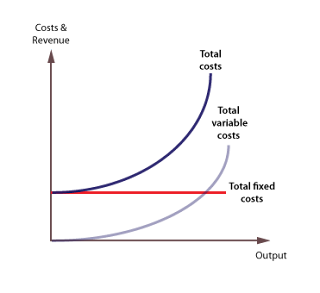Dissertation Structure: The Elaborate Guide by the Experts of EssayTips
The dissertation process is a combination of delightful but scary moments for university students. Not only that well-planned dissertation is necessary for academic excellence, but also it helps to deliver your findings in an understandable way. At EssayTips we know very well the importance of dissertation structure during the presentation of your scholarly work. This blog post will focus on the major aspects of dissertation organization and will provide important tips to make your academic journey much smoother and easy by adopting the key words like EssayTips, Essay Writers Online, Professional Essay and Essay Advice.
Basic Dissertation Structure
Chapter1: Introduction
The Introduction lays the foundation for your dissertation, featuring the research subject, goals, and importance. It outlines the research problem in detail, describes the boundaries of the study and precisely defines its aims, and summarizes the theoretical framework or conceptual framework used in this research.
Chapter 2: Literature Review
The literature review provides a critical analysis of the relevant scholarship which is based on the research subject. This highlights your knowledge about research landscape, and shows which areas of literature have gaps or controversies and your study necessary. Structure the literature review either thematically or chronologically in order to synthesize relevant knowledge in an orderly fashion.
Chapter 3: Methodology
In the methodology section I have described the research design, methods and procedures that we have used to conduct the study. This section presents the research approach (qualitative, quantitative, or mixed methods) and describes data collection methods, sampling techniques, and data analysis procedures. Make sure that you are transparent and thorough in reporting your research methods because the more you do this, the more credible will be your findings.
Chapter 4 : Findings
In this part, make sure your research findings are structured and easy to understand. Leverage tables, charts, or graphs to show quantitative data and provide a narrative in explaining qualitative findings. Evaluate the results in accordance with the research questions or hypothesis. Then analyze any unexpected or significant results that you have discovered during the research.
Chapter 5: Discussion
The interpretation section examines the results within the framework of study goals and the theoretical framework. Assess the impact of the results, contrast them with earlier studies, and dissect their theoretical and practical importance. Discuss the study's drawbacks and propose recommendations that could be used for further research.
Chapter 6: Conclusion
The conclusion recapitulates the central results of the study, reaffirms the research main purpose and outcomes, and touches upon the implications for theory, practice, and policy. It concludes the overall thesis by drawing conclusion on the significance of the research and possible future inquiry.
References
Make the list of all references cited in your dissertation and use the right citation style (e.g., APA, MLA, Chicago). Consistency and precision of all bibliographic references and citations must meet the academic standards.
Appendices
Include any additional materials, such as questionnaires, interview transcripts, or raw data, at the end of the paper. Label the appendixes accordingly and make a reference to them whenever necessary.
Employing EssayTips as an Effective Tool for Dissertation Achievement
The dissertation process can be an intimidating prospect, but at EssayTips we are always here to support you with our premium essay writing services and advice. The team of our online essay writers is supported with knowledge in multiple academic fields, including science, art, business, management, IT & software, statistics, healthcare, and nursing. Our personalized assistance includes helping you structure you dissertation, refining the research methodology, or improving your writing. We offer you support and essay advice that is particular to your needs.
Sample Format Of Dissertation
Title Page:
Title of the Dissertation
Author's Name
Institution's Name
Date
Abstract:
Brief dissertation provides a summary of the dissertation, goal, method, key findings, and conclusion. Majorly confined to 150-300 words.
Acknowledgments:
A paragraph in which the author thanks those who helped in completing this dissertation such as supervisors, mentors, funders and family members.
Table of Contents:
A comprehensive content table outlining the chapter, section, and subsection numbers in the dissertation and their corresponding page numbers.
List of Tables/Figures:
A list containing all tables and images used in this dissertation accompanies the title and page numbers.
List of Abbreviations/Acronyms (Optional):
A dictionary of abbreviations and acronyms used throughout the dissertation supplemented with full meanings.
Introduction:
The first chapter that will include an introduction of the research topic, goals, value, and structure.
Literature Review:
A thorough working through of the existing literature pertinent to the topic under investigation, concerning important theories, concepts, empirical studies and the gaps in the literature.
Methodology:
extensive information about how the study was carried out, including the research design, methods, processes and techniques utilized, as well as data collection and analysis methods.
Findings:
Presentation and analysis of the research results structured according to the answered questions or the proposed hypotheses. Includes textual descriptions, tables, diagrams, and figures wherever possible.
Discussion:
Explanation and discussion of the outcome based on the objectives of the research, the theoretical framework and the literature. Implications, limitations and future directions of the analysis.
Conclusion:
Summarizing the main points, implications, contributions, and recommendations stemming from the research study. Considerations of the relevance of the research topic and suggestions for future research.
References:
A complete list of all references in the dissertation arranged according to the alphabetical order of the last name of the authors or the numerical order of citations. In order to follow standardized citation style (e.g., APA, MLA, Chicago).
Appendices:
Such supplementary materials like questionnaires, interview transcripts, raw data or additional analyses, that were referred to in the main text but are not crucial in understanding dissertation.
The plan impose a framework for the setup and presentation of the evidence in a dissertation and this ensure that the content is clear, coherent and consistent.
Conclusion: Planning a Harmonious Structure of the Dissertation
Finally, it is imperative to master the structure of your dissertation for this to help you present the research findings to the relevant field of study well. By sticking to the main theses described in this guide and making use of EssayTips expertise you will be able to do the work on dissertation urge with confidence and achieve the desired result. Contact us now for more information on our professional writing services to help you create a thesis using research skills that showcase your academic ability.
WATCH MORE
.jpg)



Comments
Post a Comment